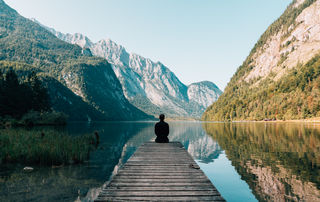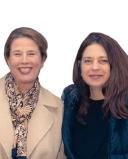Spirituality
Can I Get a Witness?
The role of self-reflection in maintaining equilibrium.
Posted January 26, 2018

We decided to focus this time on addressing some common misunderstandings around the idea of authentic feeling raised in our last post. In “Don’t Trust Your Feelings,” we certainly didn’t mean to imply that anyone should ignore their gut instincts about a person or situation. These messages are a vital survival mechanism and should never be ignored. We also didn’t mean that people should be without emotion–they are part of what makes us human beings and allows us to be empathetic toward others. It is how we react to and work with these feelings that matters.
Part of what hinders this discussion is that we don’t have useful vocabulary that allows for nuance. As a result, it is easy to think that authentic feeling means simply following our moods. The affective landscape of human beings is fraught with swampland including complexes that can create a whole storm of emotions and moods. When touched in a weak spot even a very stable personality can tip into feelings that in turn lead to poor decision making. Ability to self–regulate emotionally and limit impulsivity is a hallmark of maturity. Teenagers display the characteristics of moodiness and impulsivity precisely because they have not yet learned to place their feelings and impulses within a larger context.
In “Finding Sanctuary” Abbot Christopher Jamison writes that religious traditions offer tools for ensuring that we can process feelings particularly if we are going through a time of emotional turmoil. Taking regular periods of time for self-reflection and contemplation is a vital practice in this regard. These practices offer perspective on situations allowing time to consider if things are as bad as they seem.
Reflection also goes a long way towards mitigating the habit of being a “crisis junkie” as events can be placed in a larger frame of reference and understood as being part of life. The idea that events will settle down is, of course, a cherished dream of many of us. However, experience shows that, in fact, life gets more complicated with time. What does change is the ability to handle the challenges. Jamison refers to this as the ability to discern and to decide “which voices to follow."
Cultivating the Witness
The method of cultivating a witnessing consciousness is one of the many useful practices taught across contemplative traditions. It is a voluntary creation of the intellect–a position of engaged and yet detached watching of our feelings and thoughts. Essentially it is a way of seeing ourselves where no judgment or comparing takes place. Instead of reacting to our immediate impulses we learn to step back and just see what is. It is a process where we can avoid getting sucked into the more unconscious patterns and instead turn back inwards to search more deeply for perspective and meaning. The witness dwells in the space between the heat of our unexamined feelings and the discriminative intellect.
In Yoga philosophy, this aspect of the mind is termed the buddhi–the awake mind–and encompasses intuition, discrimination, and spiritual judgment. It is the part of our mind and psyche that is capable of grasping the higher realms within us and steers us wisely through life’s challenges. It can also be viewed as an aspect of our ego used to extricate ourselves from our projections and complexes. In Buddhist as well as Yogic texts they refer to these as the ‘veils’ of our mind.
The regular practice of witnessing allows us to observe our feelings more clearly and act from a position that allows for perspective and maturity. It is never a matter of ignoring or dismissing our feelings, but rather allowing these to be in dialogue with discriminative intelligence and our moral compass. In Buddhism, for instance, ‘right understanding’ is foundational to spiritual practice and is the first principle from which everything else flows.
Contemplative traditions teach us that all of our daily activities and the many voices of the mind are available to the witness as long as we slow down enough to see the inherent quality and meaning in these. The witness, however, does not come into existence without some kind of training. It must be developed by specific techniques. Various meditation practices and mindfulness can be used that take us out of our normal reaction-patterns and help to establish the witness in order to better navigate the complex labyrinth of the mind.
References
Bechsgaard, Gitte. 2013. The Gift of Consciousness. Newcastle upon Tyne: Cambridge Scholars Publishing
Jamison, Christopher. 2006. Finding Sanctuary. Monastic Steps for Everyday Life. London: Weidenfield & Nicolson.


